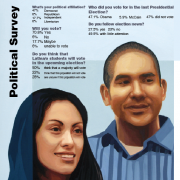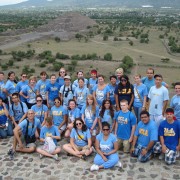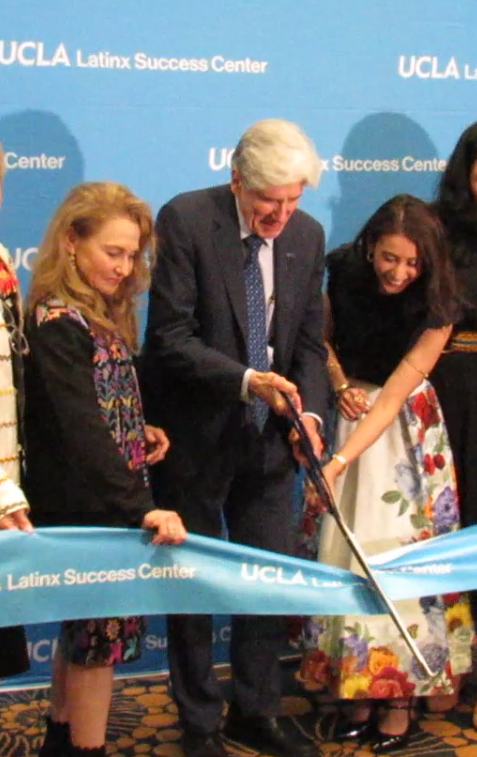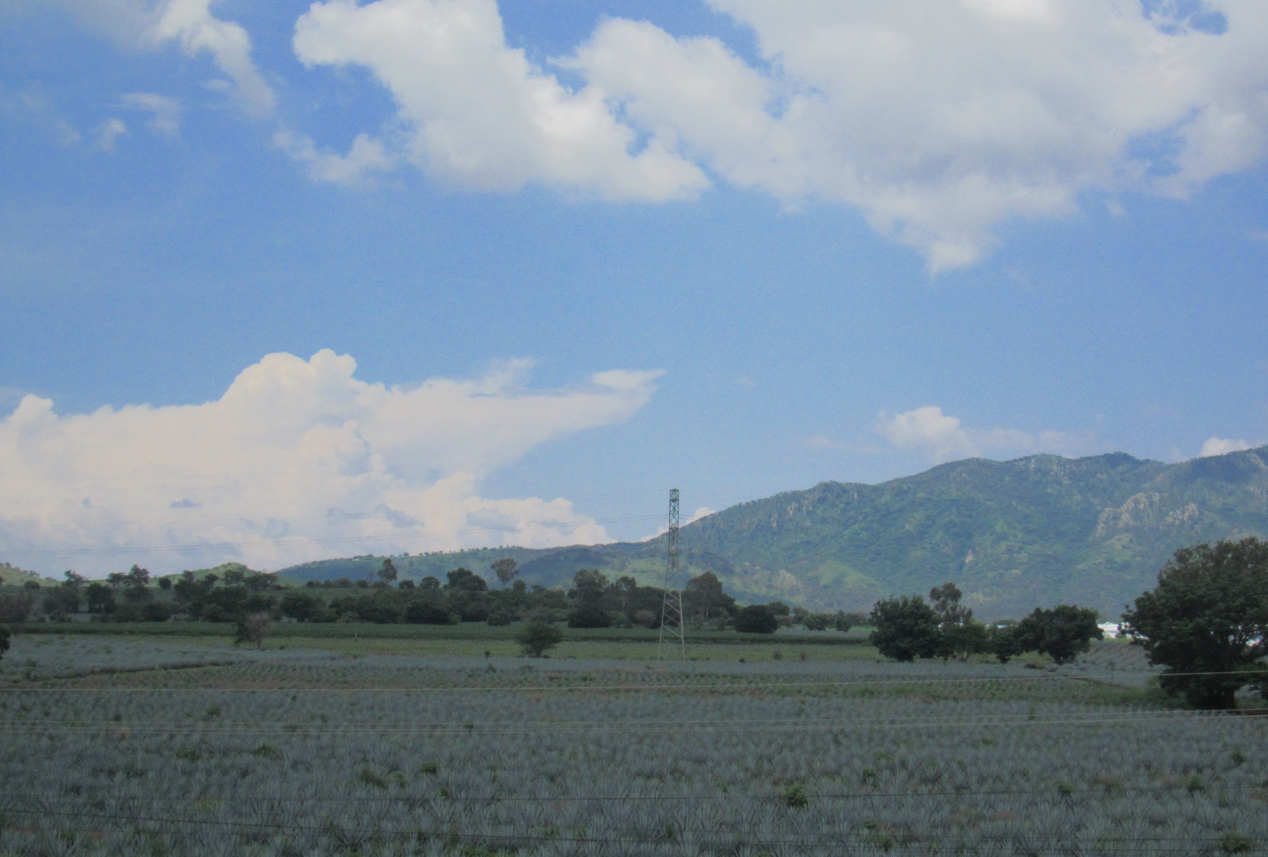The Time a Painting Told Me What to Do

Photo provided by Olivia Zepeda
UCLA was not my first choice school. In high school, my dream was to study International Relations on the East Coast, where I could then get a job in DC, work in a semi-calm city and live the suburban lifestyle— a classic white-American dream. I almost thought I had it, too, but when I was forced to sit with myself and make a decision, I realized I couldn’t. I didn’t want to. I wanted someone else to tell me. I waited for a sign.
In 2021, I visited the Smithsonian American Art Museum in Washington, DC on assignment from my Ethics & Leadership teacher. I was supposed to visit the temporary exhibition of influential women writers throughout history, write a reflection, and then head back to the residential building for further instruction. Though I completed my assignment and was set on heading back, as I walked out from the double doors of the exhibition, I felt a strong pull from the room opposite where I stood.
It was curiosity, for sure, but also a moral obligation to aimlessly wander around for a bit while trying to look pleasant and mysterious. Still, as I walked through the hall and past each room filled with intricate art on colorful walls, it felt as though I already knew exactly where I was going.
I stopped in a room with green and purple walls. Taking in each piece, the browns of each character’s faces, the dark oranges, deep blues and bright yellows covered me in a thick heavy blanket with a tiger on it. For some reason (I was surrounded by brown faces), each piece felt familiar. I read the plaques and realized why.
2,672 miles away from my home in Los Angeles, I found Los Angeles. Each painting depicted crowded streets of big and small towns and neighborhoods, filled with working people of America. Scenes of barber shops, clotheslines hanging off apartment buildings and town fairs told the stories of every-day Americans during the 1930s. I circled around the room and was finally face-to-face with who had been calling out to me from across the museum.
He probably has the ugliest portrait I have ever seen. A short young man—appearing more dirty than he is brown—in pants too short to cover his mud-stained boots stood a head taller than the chain-link fence to his right. Behind him is a rundown shack, its condition a sad contrast to the golden sky in the background.
“El Tamalito del Hoyo” is his name and the title of my favorite painting in the entire world. His maker, Roberto Chávez, was born in Los Angeles in 1932. Chávez’s paintings illustrate his memories of growing up around East L.A., and though he never knew Tamalito’s real name, he remembers Tamalito as one of the vatos from “El Hoyo,” where he hung out growing up.
The day I found El Tamalito marked a month since I moved to DC to start my first semester as a high school junior. It was also the second time I was trying to fight back “imposter syndrome,” though being across the country and enrolled in the hardest classes I’ve ever had made this wave a lot stronger than before.
The plaque beside Tamalito reads, “This portrait also serves as an homage to the Mexican American residents and communities of Los Angeles.”
In a moment when I was doubting my abilities to keep up, Chávez made me look at the ugliest little man ever, reminding me that I may feel as bad as Tamalito looks—but at least I wasn’t ugly.
Knowing that Tamalito was nearby felt like I had my community in L.A. looking out for me in DC, so when I found myself in Washington once more on a campus visit for one of my top schools, I had to stop by and say hi.
My experience in DC not only solidified what I wanted to study in university but it made me reconsider all that was possible with my future. It gave me the courage to move out from home and clarity on some of my most important relationships. I wanted to go to school in DC, but there were other things I needed to consider too.
In 2023, a month away from graduation, I stood in front of Tamalito again, waiting for him to say something. He didn’t. Needless to say, that was one of the biggest disappointments of my life.
I walked away for a moment. I knew I couldn’t go back to L.A. without making my decision first. I needed to commit to a school, and I needed to choose now. I went back to the corner where Tamalito stood and looked up at him, disappointed that he wasn’t the sign I was looking for. I gave it a few seconds. Then, I sighed and took out my phone. I was convinced that he wasn’t going to give me my answer now, but I hoped that Chávez would have some exhibitions in California that would maybe be of better help. I wanted to save his name in my search history.
When I googled Roberto Chávez, multiple short biographies of his influence in the first-wave Chicano art movement in East Los Angeles caught my attention. He was a Chicano artist. He co-founded the Chicano Studies Department at East Los Angeles College. His work spoke to the political movements that I had dedicated much of my youth to learning and embracing.
Finally, Chávez gave in. Following his service in the military, in 1961 Chávez received a master’s degree in art from UCLA. I wanted to slap the dirt off of Tamalitos ugly face.
When I returned home, the first thing I did was accept my offer letter from UCLA as a pre-political science major. In accepting the offer, I also made a promise to myself that I would return to DC in the future. I knew of UCDC’s Quarter in Washington Program, and I knew that I was going to do it.
As I write this article, I’m sitting on a wooden bench next to Tamalito on the 1st floor of the South wing. His plaque is not updated to reflect his makers’ death, who passed away last year in December.
It is now my last quarter as a “junior” in college, and I’ve spent the last few weeks as a Research and Policy Fellow at the League of United Latin American Citizens (LULAC) researching federal and state legislation impacting undocumented immigrants across the country.
Most recently, a colleague and I had our work published in the Maryland Reporter, in which we explain the potential impact of the Maryland Values Act and the precedent it serves for other southeastern states.
I am beyond grateful for the opportunity to study in DC and work with the nation’s oldest Latino civil rights organization. While I couldn’t have accomplished what I have without the unwavering support of my mentors, the biggest lesson I’ve learned since being in DC for the first time 4 years ago, is that we are limited by what we believe we deserve. Trust that I know there are forces beyond our control that impact our ability to achieve. Trust that I’ve made it my life’s work to make it easier for the next generation. We should never be that force against ourselves. Find Tamalito.








